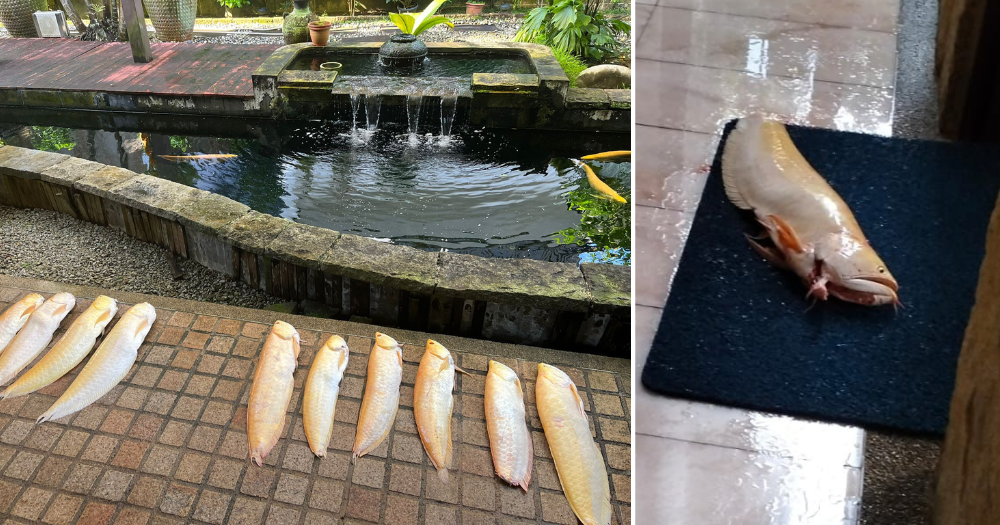More than a year after otters killed her pet koi and fishes, Yuen Ying Tham woke up once again to a massacre.
In October 2022, otters entered Tham's landed property at Berrima Road in the Bukit Timah area.
Tham lost 23 koi, over 20 algae-eating fish, and two albino sucker fish.
10 arowanas killed
On Jan. 17, 2024, otters entered her property again at around 7am, and this time made it all the way inside her house.
Speaking to Mothership, Tham shared that the otters had likely squeezed through the gaps in the gates and perimeter fencing.
Photos Tham shared of the aftermath showed the carcasses of her pet arowanas strewn about the walkway, with some floating dead in the ponds.
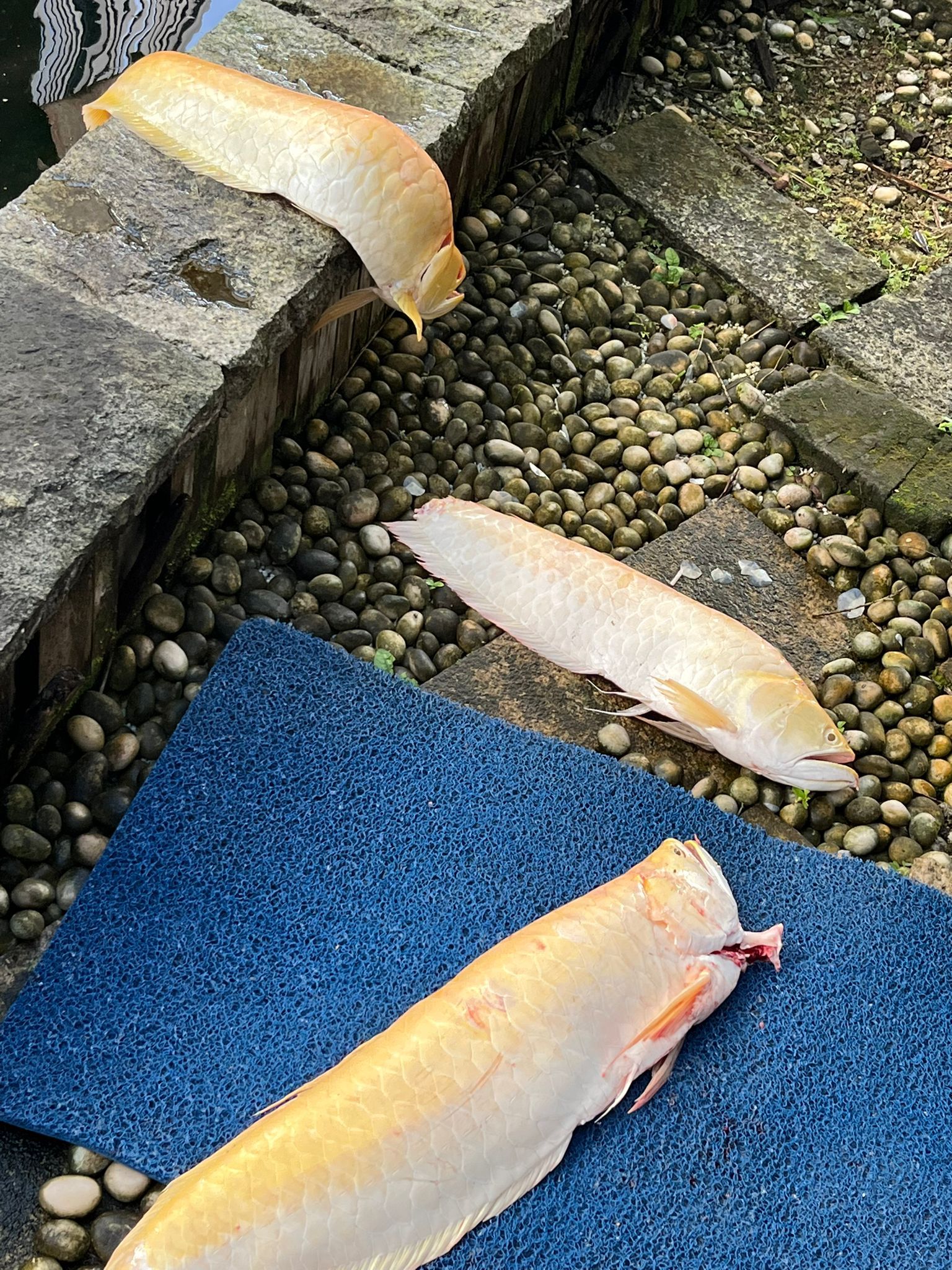 Photo courtesy of Yuen Ying Tham
Photo courtesy of Yuen Ying Tham
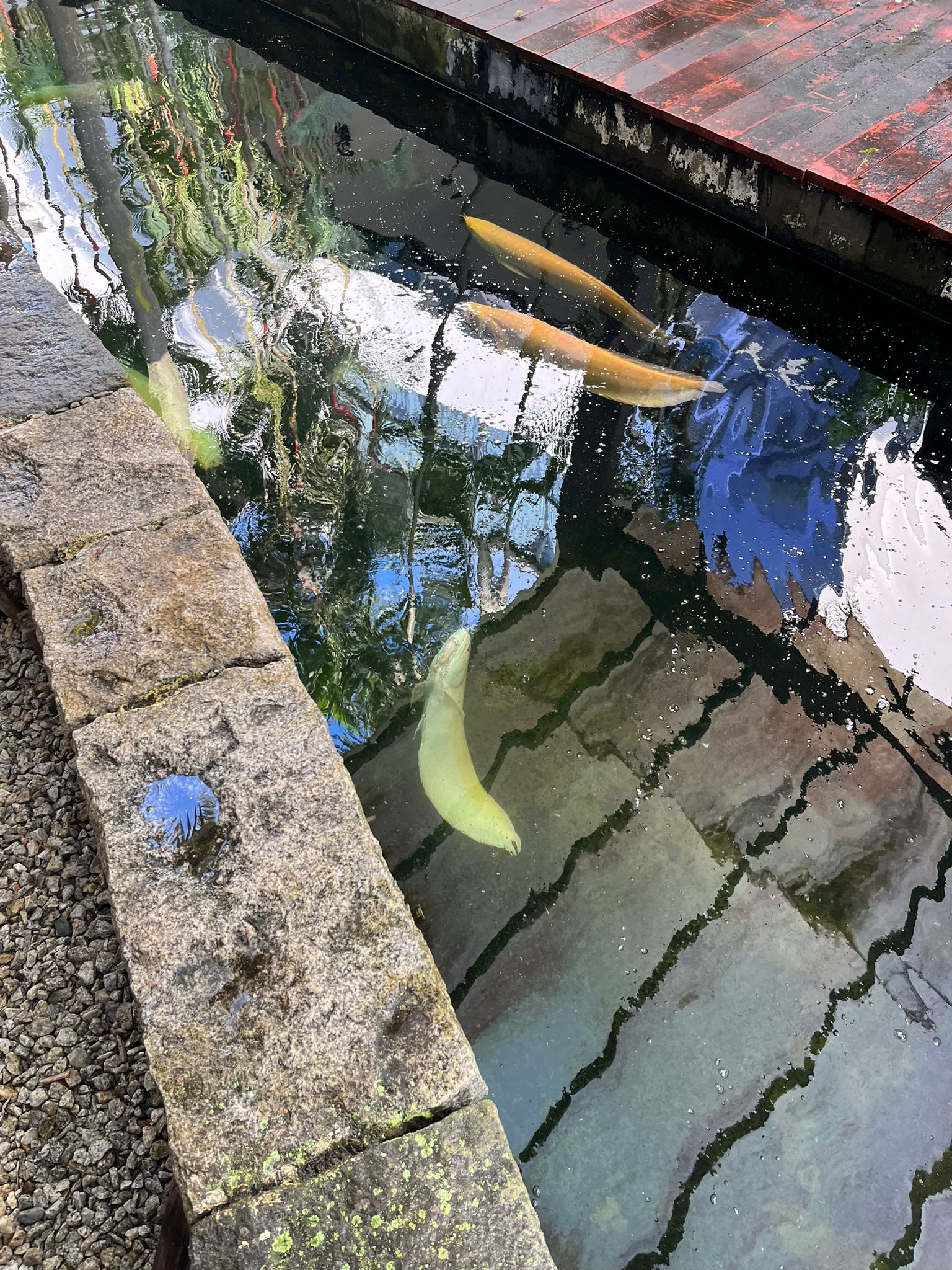 Photo courtesy of Yuen Ying Tham
Photo courtesy of Yuen Ying Tham
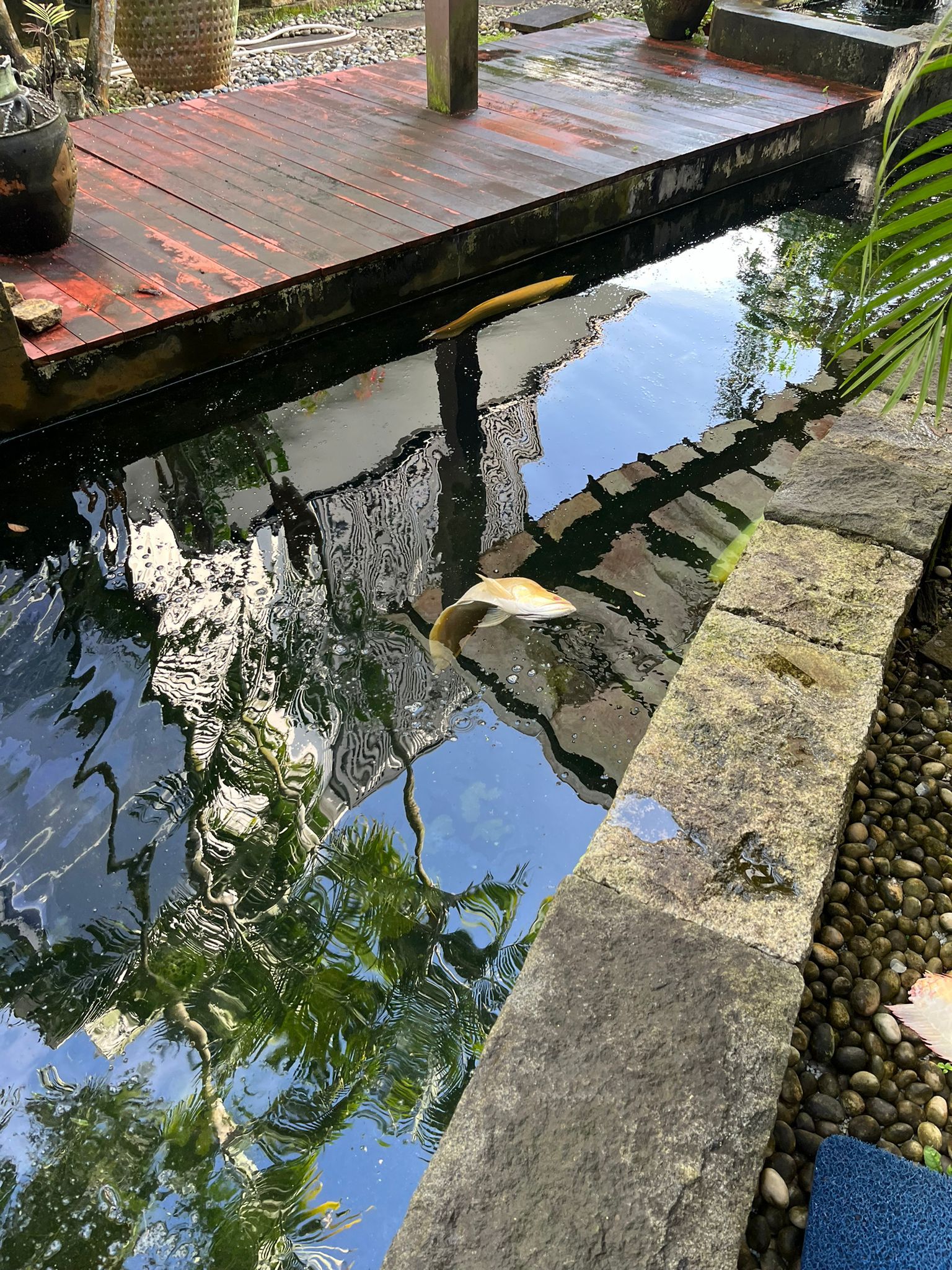 Photo courtesy of Yuen Ying Tham
Photo courtesy of Yuen Ying Tham
As Tham has a small pond that extends into the house for the fish to swim in, the pack of otters managed to make their way into the house as well.
Tham's helper, who was awake at the time, witnessed the otters' intrusion.
Although the helper attempted to scare the otters off by shouting at them, the critters were apparently undeterred.
One even left an unsightly gift on a doormat inside Tham's hallway.
The creatures also "left all the floors wet", Tham said.
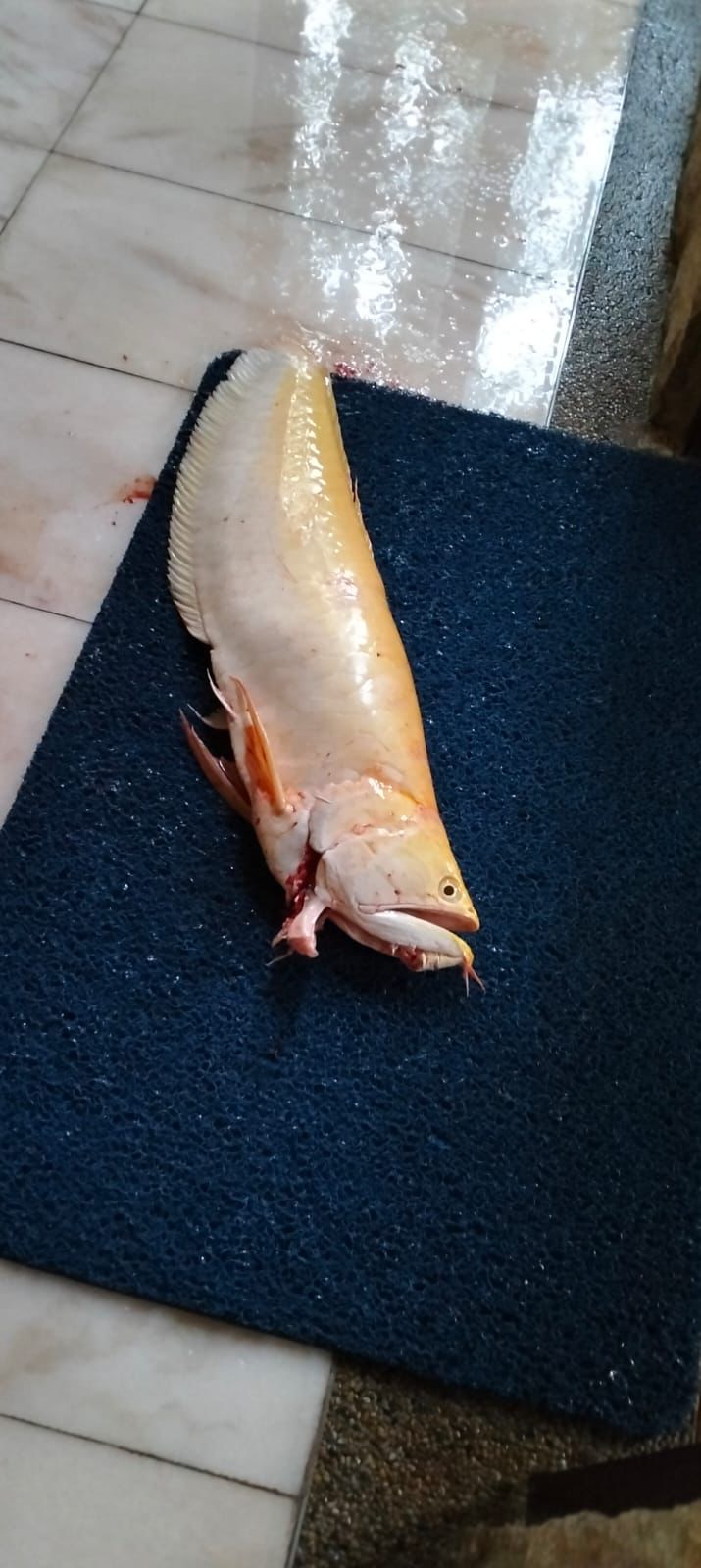 Photo courtesy of Yuen Ying Tham
Photo courtesy of Yuen Ying Tham
Tham kept a total of 16 arowanas, each costing around S$1,000. Now, she has six left.
She noted that most of the fishes were "killed for fun" and not eaten, pointing out that some of the arowanas were only bitten near the chins or had missing eyes and fins.
 Photo courtesy of Yuen Ying Tham
Photo courtesy of Yuen Ying Tham
No more plans to keep fish
Despite the previous attack in 2022, Tham added that her family was unable to fence up or further fortify the ponds and perimeters of her property "because of the size... and the design".
"It would require major renovation," she said.
Tham subsequently left the ponds empty, but they gradually became infested with frogs.
As such, she decided to keep arowanas as she believed "[they're] not really a favourite of otters".
Tham shared that prior to the incident yesterday, she had not seen any otters in the vicinity of her residence since they entered her property in 2022.
Currently, she has no further plans to keep more fish.
Why do otters kill for fun?
The one question that remains is why otters seemingly kill for sport.
N Sivasothi, a biologist and lecturer at the National University of Singapore, previously told Mothership that otters enter an "exploratory mode" when pushed out of their main habitat.
"So the primary purpose of why they are there — they are evaluating resources," he said.
Thus, when exploring, otters encounter a pond full of fish, and they do what otters do — prey on the fish.
Otters will react to the sight of prey and then "move on" with their exploration.
This may result in a situation where the kill rate is high, but the consumption rate is low.
The design of home ponds, meant for viewing, may also mean easy access for the otters and fewer hiding spots for the fishes.
Fishes in home ponds may also be habituated to swim towards you, having gotten used to being fed by their owners above the pond.
In such circumstances, "the fish don't stand a chance", Sivasothi said.
Implementing measures
The National Parks Board (NParks) has previously stated that the presence of otters in residential areas is likely to only be transient.
In cases where otters have preyed on fishes in residential ponds, NParks will work together with the Otter Working Group (OWG), to help residents and estate managers set-up exclusionary measures to prevent otters from gaining access to their compound.
These include meshing up gaps in gates to prevent otters from entering.
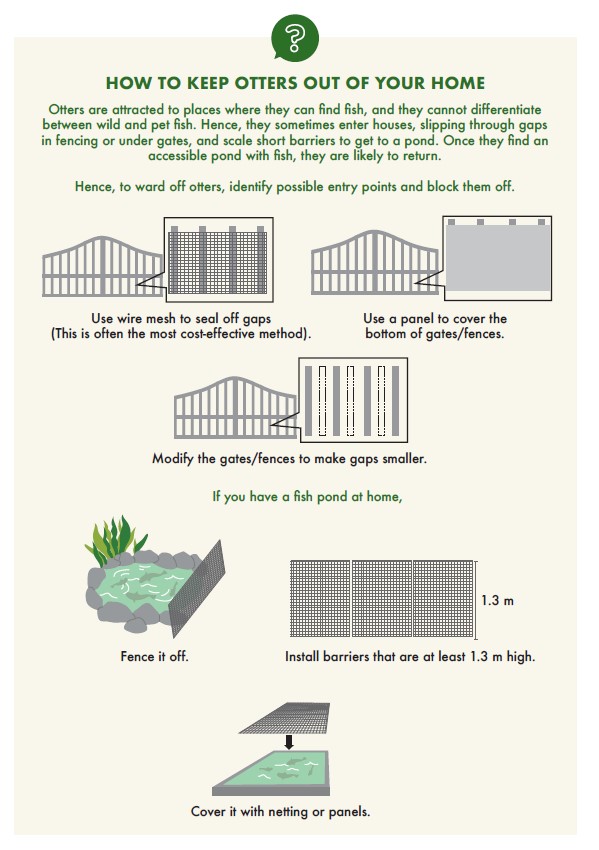 Image via NParks.
Image via NParks.
Relocation will only be carried out if the otters are found to have established a holt in residential areas and are cut off from natural food sources, NParks explained.
Sivasothi believes that culling, on the other hand, should not be a go-to response.
In fact, the otter population needs no culling. Territorial disputes between the various otter families keep the population in check.
Top photo courtesy of Yuen Ying Tham
If you like what you read, follow us on Facebook, Instagram, Twitter and Telegram to get the latest updates.

